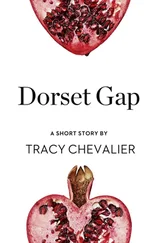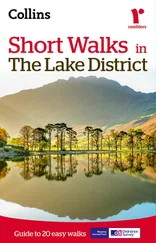
Published by Collins
An imprint of HarperCollins Publishers Westerhill Road Bishopbriggs Glasgow G64 2QT
www.harpercollins.co.uk
First edition 2011
Second edition 2015
Copyright © HarperCollins Publishers Ltd 2015
Original text © David Perrott and Laurence Main
Collins ® is a registered trademark of
HarperCollins Publishers Limited
Mapping on the inner front cover and all
walking planning maps generated from
Collins Bartholomew digital databases
This product uses map data licensed from Ordnance Survey
© Crown copyright and database rights (2015)
Ordnance Survey (100018598)
All rights reserved under International and Pan-American Copyright Conventions. By payment of the required fees, you have been granted the nonexclusive, nontransferable right to access and read the text of this e-book on-screen. No part of this text may be reproduced, transmitted, downloaded, decompiled, reverse-engineered, or stored in or introduced into any information storage and retrieval system, in any form or by any means, whether electronic or mechanical, now known or hereafter invented, without the express written permission of HarperCollins e-books.
The contents of this publication are believed correct at the time of printing. Nevertheless, the publisher can accept no responsibility for errors or omissions, changes in the detail given, or for any expense or loss thereby caused.
email: roadcheck@harpercollins.co.uk
Follow us @collinsmaps
Ebook Edition © March 2015 ISBN: 9780008102067
Version: 2015-04-28
Cover
Title Page
Copyright
Short Walk locations
Introduction
How to use this book
Short walks
| walk 1: |
Melbury Beacon5 miles (8km) |
| walk 2: |
Bokerley Dyke4 miles (6.5km) |
| walk 3: |
Badbury Rings3 miles (4.5km) |
| walk 4: |
Hod Hill3¼ miles (5km) |
| walk 5: |
Sturminster Newton4½ miles (7km) |
| walk 6: |
Evershot5 miles (8km) |
| walk 7: |
Cerne Abbas3½ miles (5.5km) |
| walk 8: |
The Dorsetshire Gap2½ miles (4km) |
| walk 9: |
Tolpuddle5 miles (8km) |
| walk 10: |
Hardy’s Cottage3½ miles (5.5km) |
| walk 11: |
Golden Cap3 miles (5km) |
| walk 12: |
Hardy Monument3½ miles (5.5km) |
| walk 13: |
Maiden Castle2 miles (3km) |
| walk 14: |
White Horse Hill4½ miles (7km) |
| walk 15: |
Abbotsbury Swannery2½ miles (4km) |
| walk 16: |
Moonfleet4 miles (6.5km) |
| walk 17: |
Portland2½ miles (4km) |
| walk 18: |
Durdle Door2¾ miles (4.5km) |
| walk 19: |
Corfe Castle3½ miles (5.5km) |
| walk 20: |
Old Harry4 miles (6.5km) |
Photo credits
About the Publisher
walk 1, walk 2, walk 3, walk 4, walk 5, walk 6, walk 7, walk 8, walk 9, walk 10, walk 11, walk 12, walk 13, walk 14, walk 15, walk 16, walk 17, walk 18, walk 19, walk 20

Dorset offers an amazing variety of unspoilt scenery and many wonderful opportunities for walking. There are no mountains but there are high places with magnificent views. The county is rich in geology and wildlife.
The gentle, undulating countryside around Blackmoor Vale and the River Stour contrasts vividly with the heathland of mid-Dorset and the outstanding natural beauty of the rugged coastline. Rolling chalk hills with ridge-top footpaths provide splendid walking; so does the Dorset Coast Path with its huge cliffs and interesting features such as Golden Cap, Durdle Door and Chesil Beach. The coast is the most popular area for visitors so venture inland if you seek remote and quiet places.
The county has a fascinating history too, dominated by the remains of prehistory. Hillforts, tumuli, earthworks and other ancient monuments are scattered across the countryside. There are also many delightful villages and country towns which are well worth visiting.
Dorset is linked inextricably with Thomas Hardy, the poet and novelist, who was born in Higher Bockhampton in 1840 and lived most of his life in the county. Hardy adopted the name of the Saxon kingdom of Wessex to give territorial definition to the world his characters inhabited and to unite his series of novels. Hardy’s Wessex was an evocation of the Dorset landscape he knew so well, ‘partly real, partly dream-country’. Lovers of Hardy’s novels and poems come here from all over the world, and an awareness of his work will add immensely to the appreciation of this area, whilst enabling the walker, travelling in a way thoroughly recommended by Hardy, to really get to know ‘remarkably well’ this ‘little bit of the world’.
Walking is a pastime which can fulfil the needs of everyone. You can adapt it to suit your own preferences and it is one of the healthiest of activities. This guide is for those who just want to walk a few miles. It really doesn’t take long to find yourself in some lovely countryside. All the walks are five miles or less so should easily be completed in under three hours. Walking can be anything from an individual pastime to a family stroll, or maybe a group of friends enjoying the fresh air and open spaces of our countryside. There is no need for walking to be competitive and, to get the most from a walk, it shouldn’t be regarded simply as a means of covering a given distance in the shortest possible time.
Dorset is a predominately rural county in southwest England bounded by Devon, Somerset, Wiltshire, Hampshire, Bournemouth, Poole and the English Channel. It has many small villages but few large urban or industrial areas and no motorways. The county town is Dorchester which is adjoined by the new urban development of Poundbury designed by the Prince of Wales. Traditional market towns of note include Shaftesbury, Sturminster Newton, Blandford Forum and Wimborne Minster, whilst on the coast are the holiday resorts of Lyme Regis, Bridport, Weymouth and Swanage. The Stour, Frome and Piddle or Trent are among numerous small rivers which which cut green fertile valleys.
One unique area of Dorset is the Isle of Purbeck; although described as an island it is in reality a peninsular of around 60 square miles (155sq.km) with water on three sides, the English Channel, the River Frome and Poole Harbour.
Dorset is noted for its agricultural and dairy produce and for Portland Stone, a white-grey limestone which has been used extensively as a building stone, notably in major public buildings in London such as Buckingham Palace and St Paul’s Cathedral. Stone has been quarried in the Isle of Portland and the Isle of Purbeck since the Middle Ages. Tourism is very important to the economy of Dorset and has developed due to the beautiful scenery and coastline, the proliferation of prehistoric remains and the connection with Thomas Hardy.
Читать дальше














